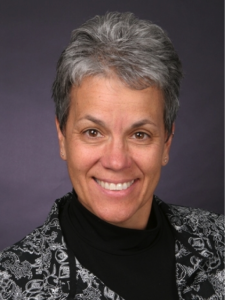 Thirty days hath September, April, June and November; or so the saying goes. It seems that the quantity of days is the only thing that our ninth month shares with these others. April invites a slow rebirth of a landscape once buried under snow, June ushers in all the excitement of warm weather activities that pull us from our homes and November once again lays the heavy cloak of winter.
Thirty days hath September, April, June and November; or so the saying goes. It seems that the quantity of days is the only thing that our ninth month shares with these others. April invites a slow rebirth of a landscape once buried under snow, June ushers in all the excitement of warm weather activities that pull us from our homes and November once again lays the heavy cloak of winter.
September days slowly fade from the months of growth to months of respite. Ripening produce and subsequent harvesting will clear the way for fallow ground which will rest silently until spring comes again. The last warm days of summer soon fade into longer nights and cooler temperatures.
Our shorts and sandals will soon be replaced by favorite sweaters, jackets, boots, mittens and scarves. The cool crisp air of September carries the fragrance of apples and cider and unearthed vegetables and fallen leaves. The sun will begin to ride low on the horizon signaling that change is coming. As a result, the decrease in daylight and the cooling nights lift the green off the leaves exposing their rich purple, rust, orange and scarlet red petticoats. This is truly my favorite season.
With the celebration of Labor Day, even our foods begin to change. At our house the fruit plates, summer salads and ice tea will soon be replaced with steaming bowls of soups made from the summer’s bounty. Hot cocoa will become our night time brew of choice shared over board games or old movies. Of course this is also when the new TV season begins and many will nestle in to catch the season premier of their favorite sitcom or reality show. All in all, September is a time of transition.
Change isn’t always easy. It isn’t always welcome. Those individuals who attend the Rebuilding at Bethel program are in the midst of change. For some the transition is a welcome relief yet for others it is mourned and feared. The members of my Dating Dementia class learn that they may need to change their approach to dating if they wish to find a healthier and happier relationship the next time around. Even the women in my Self-esteem class learn about the challenges and rewards of change as they attempt to tackle new relationship skills that could help them feel the full sense of what it means to be a whole, worthwhile, competent and adequate person.
Change can leave us feeling ambivalent; teetering between hanging on to the way things have been and stretching out to touch what could be. No matter what our life has been like we know what to expect from it even if it hasn’t been pleasant. The unknown doesn’t provide much information about how to handle what change has to offer. Sometimes we simply have to step into that unknown even when it is scary; having faith that it will all turn out for the best.
Gershen Kaufman, author of The Dynamics of Power, laid out some fundamental concepts about change. He stated that the process of change is often experienced ambivalently because it requires giving up the comfortable familiar in exchange for the feared unknown. Kaufman also reminds us that the process of change is slow and backsliding to old ways of approaching relationships should be expected. He also points out that change takes practice and patience. And finally, he stresses that courage and determination cannot be taught, so we will need to discover these qualities in ourselves if we hope to evolve.
It might help to keep these ideas about change in mind when in the midst of transitioning or recognizing that it is on the horizon. Life will always place new opportunities or challenges in our path. However, it might be comforting to know that experience with change can make you more resilient and adept. I refer to this as having bounce-ability. It is important to be especially tender and kind to yourself as well as to have some faith in your ability to handle change. How you face change can affect your emotional well-being and we know that reaching out to others can make the transition more tolerable. That is what my classes all have in common; bringing people together to make change a little more bearable with the support of other people.






 When you think about health care, what comes to mind? For some, it’s a pursuit of wellness connecting mind, body, and spirit. For others, health care is like a car’s transmission – you don’t really notice or appreciate it until it’s making a noise, or completely broken. People in the middle of a crisis or transition in a significant relationship can feel especially stressed, which we all know affects our health. Some may find themselves both ill and alone for the first time.
When you think about health care, what comes to mind? For some, it’s a pursuit of wellness connecting mind, body, and spirit. For others, health care is like a car’s transmission – you don’t really notice or appreciate it until it’s making a noise, or completely broken. People in the middle of a crisis or transition in a significant relationship can feel especially stressed, which we all know affects our health. Some may find themselves both ill and alone for the first time. In a few days we will be breaking out the grills, cracking open bottles of beer, waving flags and shooting off backyard fireworks. Some of us will attend big pyrotechnic displays at local municipal parks. Others will set up blankets and lawn chairs along crowded downtown streets to watch parades of high school marching bands, floats advertizing local businesses and organizations not to mention the shiny fire trucks, farm equipment and possibly the mayor and his wife. The local Boy and Girl Scout troops will brave the heat for that long walk down Main streets across the USA to toss Tootsie Rolls and suckers to children lining the curbs. Like people everywhere, Americans like to find reasons to celebrate and July 4th gives us reason to head out and do just that.
In a few days we will be breaking out the grills, cracking open bottles of beer, waving flags and shooting off backyard fireworks. Some of us will attend big pyrotechnic displays at local municipal parks. Others will set up blankets and lawn chairs along crowded downtown streets to watch parades of high school marching bands, floats advertizing local businesses and organizations not to mention the shiny fire trucks, farm equipment and possibly the mayor and his wife. The local Boy and Girl Scout troops will brave the heat for that long walk down Main streets across the USA to toss Tootsie Rolls and suckers to children lining the curbs. Like people everywhere, Americans like to find reasons to celebrate and July 4th gives us reason to head out and do just that. There is a Spanish proverb that states, “How beautiful it is to do nothing and then rest afterward.” I don’t know about you but that certainly sounds inviting to me. How often do you take time to do nothing, to rest, to just be? Rest from work, rest from play, rest from participating… again, or even rest from relationships?
There is a Spanish proverb that states, “How beautiful it is to do nothing and then rest afterward.” I don’t know about you but that certainly sounds inviting to me. How often do you take time to do nothing, to rest, to just be? Rest from work, rest from play, rest from participating… again, or even rest from relationships?
 Spring has finally arrived here in Wisconsin. Winter only visits us five months out of the year yet it can seem like eternity; especially as we get closer to the month of April and patches of that white stuff still hide in the shadows. However, once a 40 degree day presents itself we cast off the boots, heavy coats and scarves and race out to catch the first rays of warm sunlight, even if just briefly.
Spring has finally arrived here in Wisconsin. Winter only visits us five months out of the year yet it can seem like eternity; especially as we get closer to the month of April and patches of that white stuff still hide in the shadows. However, once a 40 degree day presents itself we cast off the boots, heavy coats and scarves and race out to catch the first rays of warm sunlight, even if just briefly.
Thanks Margaret! I would assume at some point physical chemistry can and should develop for a romantic relationship to be sustainable. At least I think I would need that. Is that an appropriate expectation? And how much time do you invest in getting to know a person before it’s apparent that there just isn’t physical chemistry?